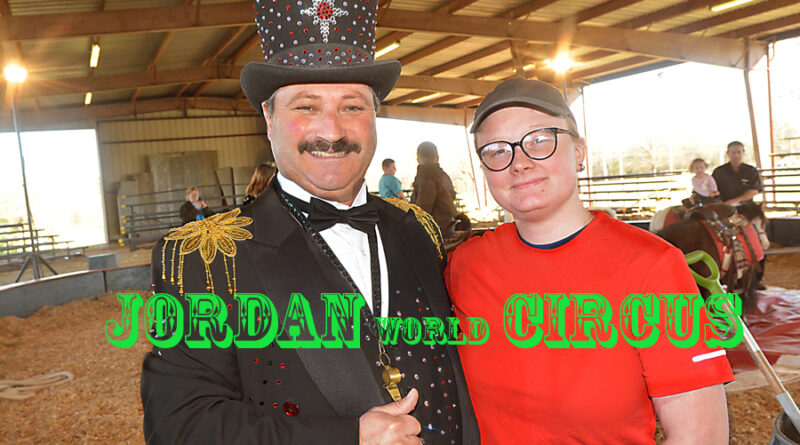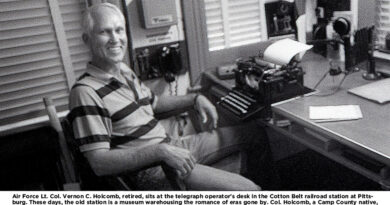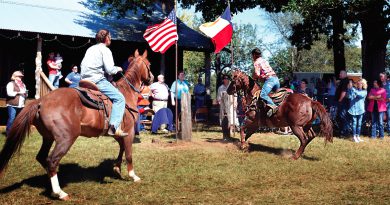The last time the circus came to town
From the archives February 2019
Kristin the Komet shot out of California, sailed four years through the U.S. Air Force, came home and landed a future as a production-line mechanic at the beer brewery.
“Huh?” she kept asking herself for two years until – with her father’s blessing – she ran away and joined the circus.
“I dance and I’d always imagined flying on a trapeze,” she said, so she was willing to live lean to follow a dream.

Kristin Finley is an endangered species. Running away to join the circus isn’t what it used to be.
In 2017, dwindling attendance, animal rights protests and operating costs closed the Ringling Brothers and Barnham and Bailey Circus that had been her ticket in 16 years ago.
“I wonder if we’re the last generation,” said Ari Steeples, Ring Master of the Las Vegas-based Jordan World Circus passing through Mt. Pleasant in the fifth week of its 2019 season. Canadian born, Mr. Steeples grew up with a father and grandfather training him to train bears.
“If you intend teaching a bear to love riding a bike, you start with cubs, not a grown bear,” he said.
Coming out of Missouri, George Hannaford, drives an 18 wheeler with living quarters behind the cab. An eighth-generation descendent of English street performers, he pulls two elephants in a trailer along with everything you’d find in the barn on an elephant farm.
His mom bottle raised Carol and Patty, a couple of four ton Indian elephants needing a combined 800 pounds of forage daily, plus 50 pounds of grain.
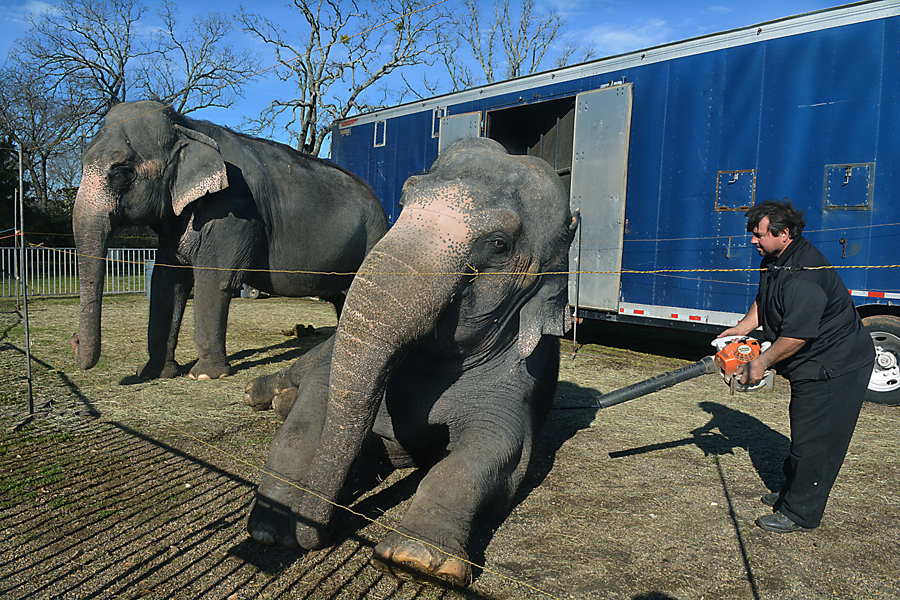
Home is a cozy sleeper behind the cab of an 18 wheeler towing a rolling barn.
“Used to be, every circus had a ’24-hour man’ who traveled ahead of the show and lined out everything the trainers needed to provide for their animals,” he said. “The internet replaced those guys.
“Wherever you are, you can go on line and if you can’t find the growers you’ve always got the feed store,” Mr. Hanneford said. “More often we’re on roads we’ve ridden before. We’ve got names and numbers, farmers who deliver and know where we’ll be when we get to their town.”
Traveling eight months averaging 60,000 miles a year, entrepreneurs contracting with the circus company have a collective knowledge of the country. Camps with hookups. Stops with facilities for show animals.
“Or I can pull an awning off the top of my truck and set up fencing,” Mr. Hanneford said. Leaving elephants alone overnight isn’t an option.
“It’d be like turning 3-year-olds loose,” he said.
Here’s a conversation overheard while Mr. Hanneford was taking the opportunity to relax in the cab of his, half dozing waiting for show time on a sunny afternoon at the Titus County Fairgrounds livestock pavilion.
An elephant blows a note like a wooden whistle, nothing like the honking bray that’s always their only line in jungle movies.
“Yea, okay, just a minute,” he answers, giving himself a moment to get stirring, get out and toss out snack-sized blocks of hay.
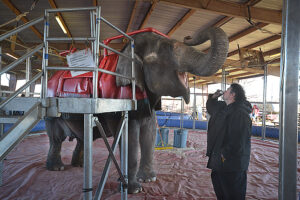
For entertainment, elephants mimic their keeper.
“Patty likes to sweep,” Mr. Hanneford said. “If you forget and leave a broom in reach, she’ll wear it out.”
He’s got old black and whites from Ireland, 19th century stuff of family running back through time and a string of English grandfathers. Later, they came to America and became animal trainers.
“Horsemen, mostly,” he said. There’s a remaining band of more eighth generation circus cousins operating the Hanneford Family Circus in Florida, a straight line descendent of their shared grandfather’s Royal Hanneford Circus.

Among the perfectly-painted girls, before show time when she’ll be swinging over the center of the Jordan show’s three rings, Elvira Dominguez works ticket sales. Her band uniform is red, retro tailored in Oz.
Her family came from Venezuela where there’s revolution rising, an excellent place not to be for now.
“My mother was an aerialist,” she said. “We came when I was five.
“My brother is Jorge,” she said, and she beamed. “The Jorge Dominguez Poodle Review.” The act includes her sister-in-law and 4-year-old nephew, a rising showman.
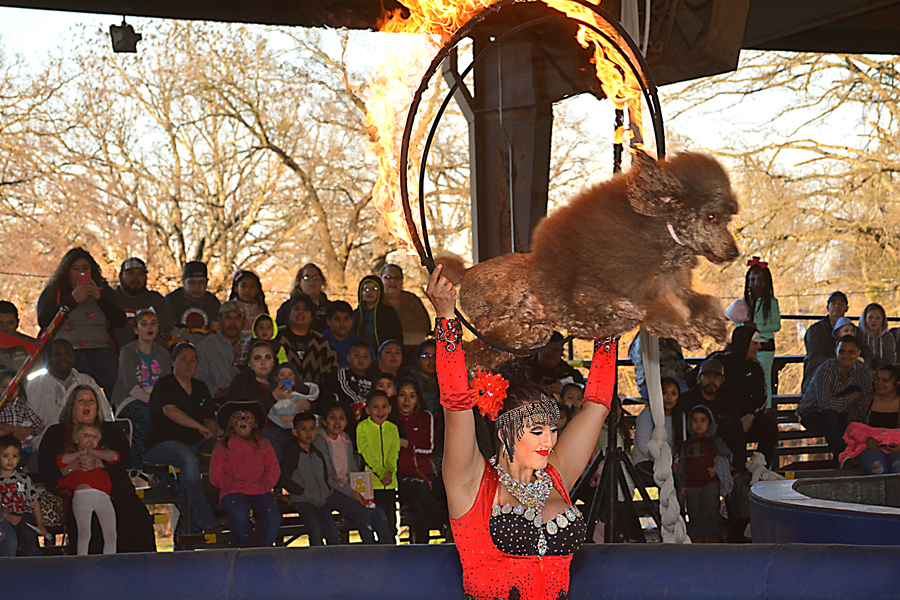
Giving up on her dream to be a trapeze artist, Kristin Finley moved on as a human cannon ball.
“I’ll always be flying a trapeze in my heart, but it’s not the same as owning your own act,” she said. “You have to split the money too many ways.”
Shot from her canon on an evening in late January, Kristin the Komet broke her leg on the third day of the 2019 tour.

The venue was small, a short shot, and when she hit the net things weren’t right. Net too tight. Not enough arc.
Recalculate.
If the show should go on, husband Rolando held the obvious solution.
“Shoot me,” he smiled.
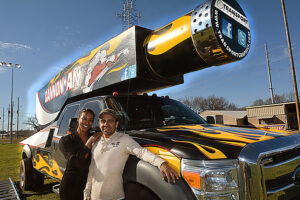
They weighted bags to match his weight, fired test shots, tested trajectories. Like family, down to the nine-member floor crew, nobody missed the one-shot rehearsal before the next show.
Life’s a blast, and “really fast,” he said, describing his first flight. The celebration was spontaneous.
“When he came up smiling, the tribe went wild,” said Mr. Steeples the Ring Master. If it’s not the last generation for the show, it’s the last for Mr. Steeples line of one-time Canadian bear trainers.
His son’s in the grocery business. In Australia. Back in Canada, his daughter chose a university.
For Mr. Steeple and a new wife, it’s life in the moment with a show down the road.
“Beats working for a living,” he said, and he smiled.

